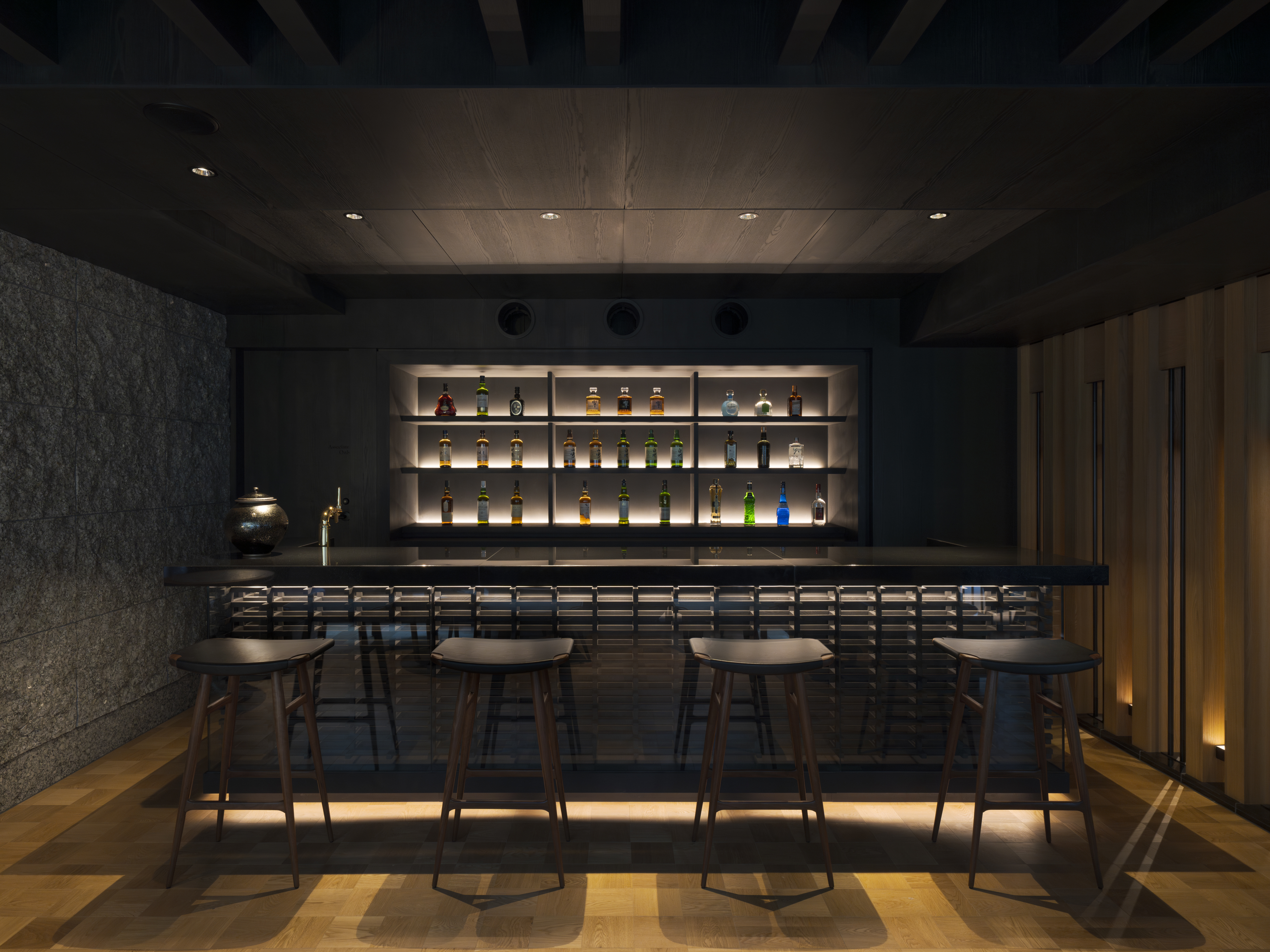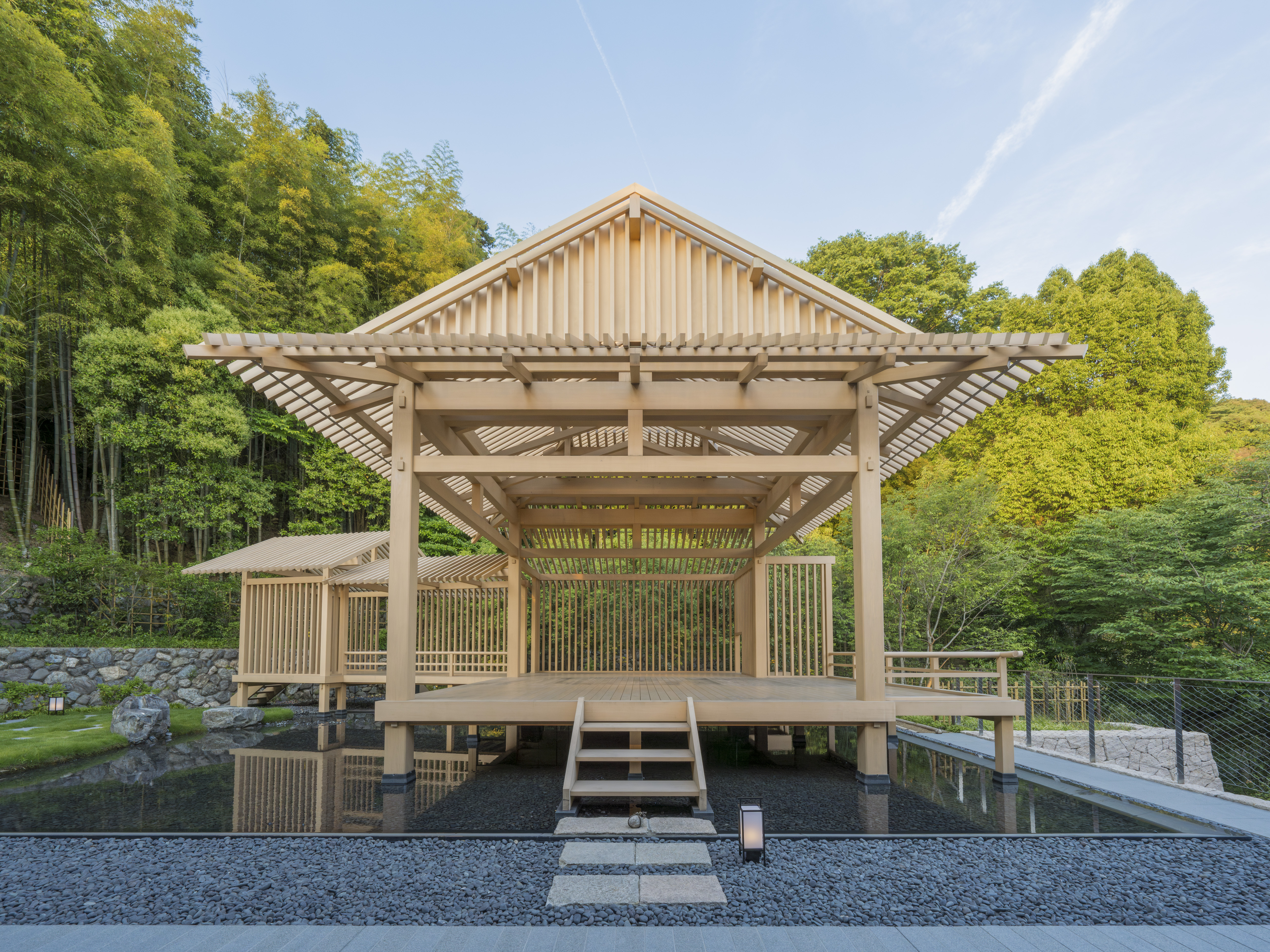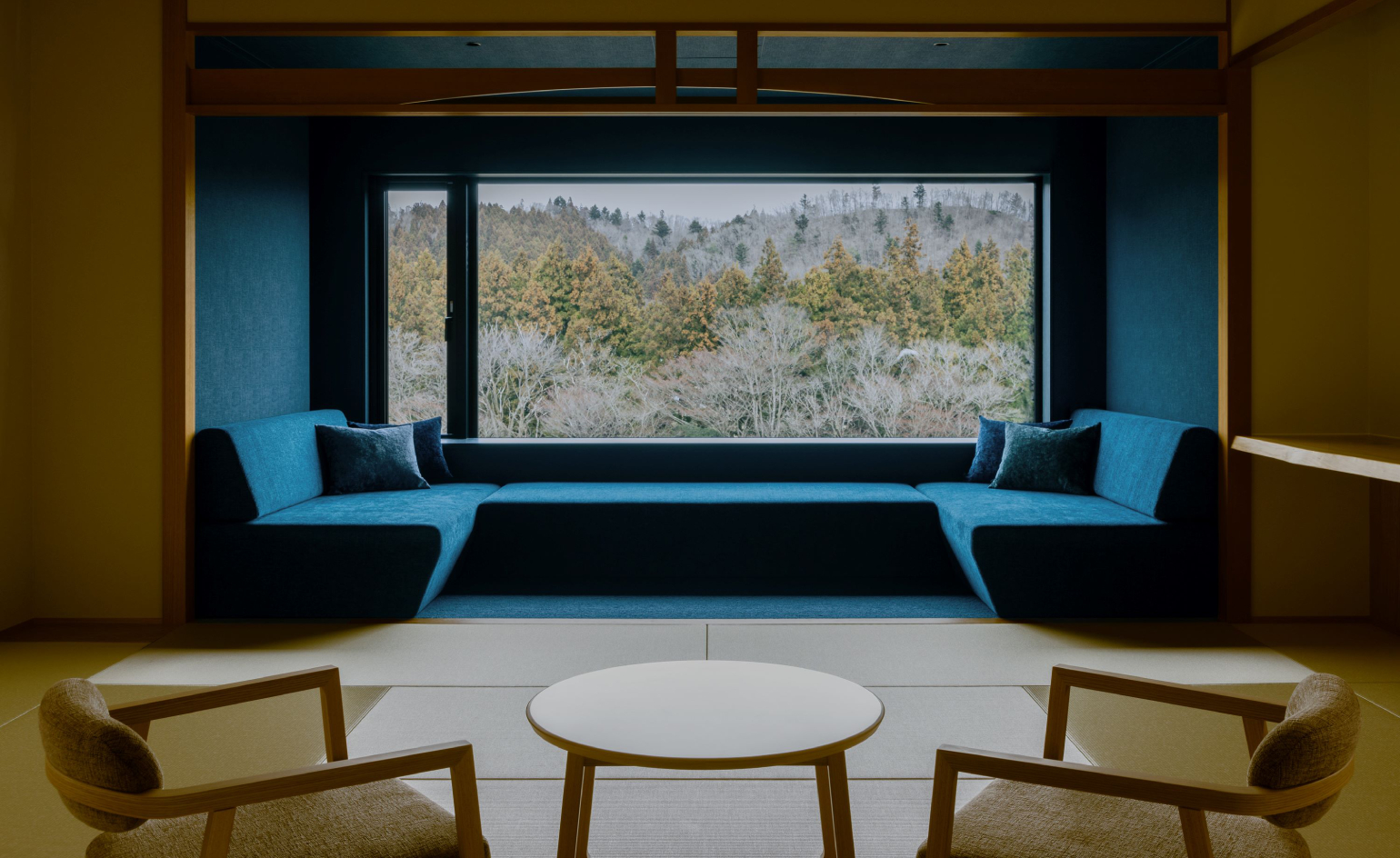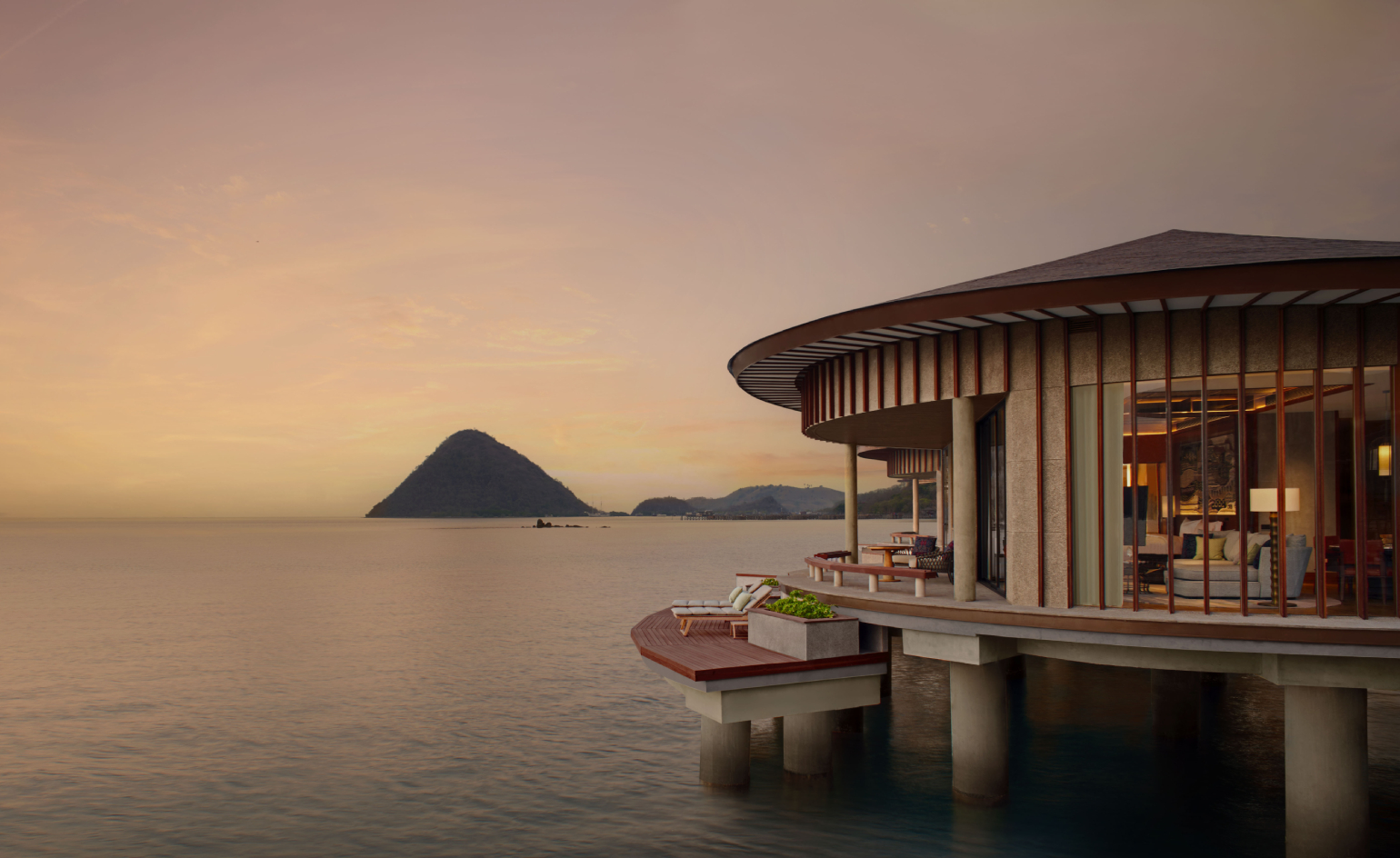Kengo Kuma’s new Kyoto hotel is ‘a sanctuary of ethereal beauty’
A former ryokan inn, Banyan Tree Higashiyama Kyoto offers onsen rooms equipped with natural hot spring water, and a contemporary take on a Noh theatre

‘A sanctuary of ethereal beauty’: these are the words Japanese architect Kengo Kuma uses to describe his new hotel project, Banyan Tree Higashiyama Kyoto, which sits in the magical bamboo forests of the Higashiyama Mountains.
With a harmony of contemporary lines, meticulous craftsmanship and a natural material palette, the new hotel – the first Banyan Tree in Japan (joining seven other establishments in sister brands) – is intimate and self-contained. Its essence is perhaps best reflected by a signature highlight at the rear of the property: a contemporary reimagining of a traditional Japanese Noh theatre, designed by Kuma to blend into the surrounding bamboo forests. ‘In Japan, there is a tradition of seeking retreat in nature, known as in-sei, which emphasises withdrawing from the bustle of daily life to find peace and spiritual renewal,’ Kuma tells Wallpaper*.
Banyan Tree Higashiyama Kyoto, Japan, by Kengo Kuma

Exterior of Banyan Tree Higashiyama Kyoto
‘Higashiyama, with its serene landscape and rich history, embodies this tradition perfectly. We wanted the hotel to be a place where guests could devote themselves to spiritual fulfilment and reflection,’ the architect adds.
With the hotel located a short walk from the celebrated (and always busy) Kiyomizu-dera Temple on Kyoto’s mountainous fringes, the transition from a ‘tourist trail’ to an ‘ethereal hillside’ sanctuary begins with a shrine-like wooden gate at the threshold.

The garden at Banyan Tree Higashiyama Kyoto
The façade then shifts into focus: spanning one wall is a sweeping expanse of organic stones once used in the ryokan inn that formerly sat on the same site. The exterior matte black walls are further sharpened by vertical timbers, rafters and eaves crafted from woods including hinoki cypress, harmonised with the curved lines of traditional kawara roof tiles. ‘Kyoto has a strict landscape ordinance and the use of tiled roofs is a rule,’ Kuma says. ‘However, this restriction has created a beautiful landscape around Kyoto, and we took advantage of the tiled landscape to create stretching, deep eaves and soft shadows with continuous rafters under the eaves.’
Inside, the triple-height reception, designed by DWP International, has sweeping glass walls at the rear, framing a minimalist garden, alongside a sculptural ceiling installation evoking a sea of bamboo plus calligraphic abstractions by washi artist Wataru Hatano on the wall behind the front desk. The nearby lobby lounge is loosely compartmentalised with a scattering of artworks and a tea area, where welcome matcha is whisked for guests.

Reception area

Lobby area
The Yukio Hashimoto-designed guest rooms – divided into two adjacent buildings – have a light purist beauty, fusing traditional Japanese aesthetics with a comfortable contemporary edge. There are swathes of tatami, low-lying window-side platforms with sunken seating and tokonoma alcoves with works by ceramic artist Eiichi Shibuya. Other details include expanses of gold leaf above the bed, gently dividing sliding screens, plus Japanese-style bathtubs crafted from aromatic hiba wood – and, in front-facing rooms, breathtaking views across city rooftops.
Wallpaper* Newsletter
Receive our daily digest of inspiration, escapism and design stories from around the world direct to your inbox.

Onsen retreat king suite

Onsen retreat king suite

Onsen retreat king suite

Onsen retreat king suite
Guests can also enjoy onsen bathing and a serene spa with high-quality massages; plus fine dining at Ryozen restaurant, tapping into a wealth of seasonal ingredients, including Kyoto vegetables, and a signature dashi broth made using five-year-aged Rishiri kelp from Hokkaido.

Onsen facility

Onsen facility
The restaurant – plus three guest rooms above – directly overlooks the Noh stage, as brought to life by Kuma. A skeletal outline of a theatre, crafted in aromatic wood, mirrors the meticulous structural dimensions that underpin the traditional vernacular of the Noh theatre.
Yet, in a contemporary twist, the theatre is constructed without a roof or walls filled in. As a result, its frame-like lines of wood, minimalist, crafted and clean, seem to dissolve into the greenery of the bamboo forest – resulting in a unique sense of spatial lightness and transparent beauty, as it hovers in its natural setting.

Ryozen restaurant

Ryozen restaurant

Ryozen restaurant

The bar

The bar
For Kuma, the creation of a Noh stage creates a ‘groundbreaking connection’ between Japanese ryokan-style inns and contemporary hotel, as he adds: ‘We hope that the Noh stage will evolve more as one of the hotel’s charms and become a symbol of Kyoto's new culture, a place that will be loved for many years to come, where guests will want to come back again and again.’

The Noh stage
Banyan Tree Higashiyama Kyoto is located at 7 Seikanji Ryozan-Cho, Higashiyama-Ward, Kyoto City, 605-0861 Kyoto, Japan, banyantree.com
Danielle Demetriou is a British writer and editor who moved from London to Japan in 2007. She writes about design, architecture and culture (for newspapers, magazines and books) and lives in an old machiya townhouse in Kyoto.
Instagram - @danielleinjapan
-
 Warp Records announces its first event in over a decade at the Barbican
Warp Records announces its first event in over a decade at the Barbican‘A Warp Happening,' landing 14 June, is guaranteed to be an epic day out
By Tianna Williams
-
 Cure your ‘beauty burnout’ with Kindred Black’s artisanal glassware
Cure your ‘beauty burnout’ with Kindred Black’s artisanal glasswareDoes a cure for ‘beauty burnout’ lie in bespoke design? The founders of Kindred Black think so. Here, they talk Wallpaper* through the brand’s latest made-to-order venture
By India Birgitta Jarvis
-
 The UK AIDS Memorial Quilt will be shown at Tate Modern
The UK AIDS Memorial Quilt will be shown at Tate ModernThe 42-panel quilt, which commemorates those affected by HIV and AIDS, will be displayed in Tate Modern’s Turbine Hall in June 2025
By Anna Solomon
-
 A new book captures the kitschy allure of Japanese ‘love hotels’
A new book captures the kitschy allure of Japanese ‘love hotels’For his latest project, French photographer François Prost documents the whimsical façades that characterise these erotic roadside venues.
By Sofia de la Cruz
-
 All aboard the world’s most luxurious train journeys
All aboard the world’s most luxurious train journeysStay on track with our pick of the most luxurious train journeys around the world, whether in 1920s-style opulence or contemporary chic
By Tianna Williams
-
 Wallpaper* checks in at Hoshino Resorts KAI Akiu: a soothing onsen hotel
Wallpaper* checks in at Hoshino Resorts KAI Akiu: a soothing onsen hotelIn Japan’s bucolic northeast, Hoshino Resorts KAI Akiu breathes new life into a sleepy hot spring village without betraying its ancient roots
By Eric Millman
-
 Shake off the winter chill at these design-led onsen hotels in Japan
Shake off the winter chill at these design-led onsen hotels in JapanWhether you’re heading to the mountains of Hokkaido or the alleys of Kyoto’s Gion district, these immaculately designed onsen hotels will keep the shivers at bay
By Jen Paolini
-
 The new hotels you’ll want to stay at in 2025
The new hotels you’ll want to stay at in 2025Where to stay in 2025? Let six of the most-read-about hotel openings of the past 12 months inspire your escape – from a tiny Tokyo bolthole to a Tanzanian safari retreat
By Sofia de la Cruz
-
 2025 getaways: where Wallpaper* editors will be travelling to this year
2025 getaways: where Wallpaper* editors will be travelling to this yearFrom the Japanese art islands of Naoshima and Teshima to the Malaysian tropical paradise of Langkawi, here’s where Wallpaper* editors plan to travel to in 2025
By Sofia de la Cruz
-
 The most whimsical hotel Christmas trees around the world
The most whimsical hotel Christmas trees around the worldWe round up the best hotel Christmas tree collaborations of the year, from an abstract take in Madrid to a heritage-rooted installation in Amsterdam
By Tianna Williams
-
 Six brilliant bars for your 2025 celebrations, hot off the Wallpaper* travel desk
Six brilliant bars for your 2025 celebrations, hot off the Wallpaper* travel deskWallpaper’s most-read bar reviews of the year can't be wrong: here’s inspiration for your festive and new year plans, from a swanky Las Vegas lounge to a minimalist London drinking den
By Sofia de la Cruz